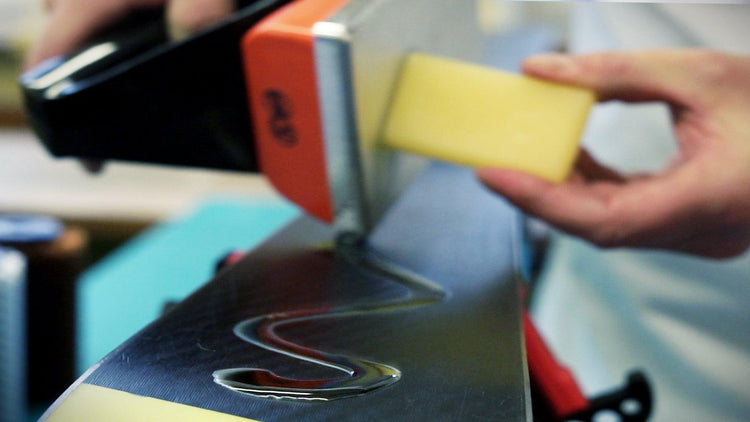First of all, it should be briefly explained why waxing skis and snowboards is important. To achieve a smooth, safe riding experience and a certain speed while skiing, the friction between the ski and the snow should be as low as possible. For this reason, the ski must be water-repellent. Wax helps with this and thus improves the sliding properties of the skis. This is the main reason why a ski or snowboard should be waxed.
The choice of wax primarily depends on the air temperature. The condition of the snow is also an important indicator. The base of the skis or snowboards plays a minor role in the selection of the wax. If the temperatures are very cold, it is advisable to apply a wax for subzero temperatures. At higher temperatures, a wax for above-zero temperatures is suitable. In general, there are many universal waxes that cover a wide temperature range (both below and above zero degrees) and can be used without problems. These temperature ranges are usually indicated on the wax packaging.
What types of wax are there?
There are two types of wax – hot wax and cold wax. The difference lies in the application. Hot wax is applied at high temperatures by heating with an iron, whereas cold wax is applied without any tools. Both types of wax come in versions with fluorine and without. Fluorinated waxes are more hydrophobic than comparable waxes – they therefore glide better.
Hot wax
This type of wax is mainly offered in block form in various sizes. Meanwhile, the wax is also available in many different colors on the market. However, these vary depending on the manufacturer, so one should not rely on the colors of the waxes as an indication for the different temperature ranges.Equipment: For processing hot wax, you need a ski clamp holder, as well as a waxing iron (we do not recommend using a household iron), a scraper blade, as well as various brushes.
The advantage: lies in the durability. By heating the wax, it penetrates deeply into the base and thus lasts 2-3 days.
The disadvantage: expensive, as quite a bit of equipment is needed. Also, the time required is large.
TO HOT WAX
Cold wax
Here the selection of different variations is larger. There is block wax, cream wax, and liquid wax. Cold waxes are also available with or without fluorine content. Cold waxes are very easy to apply and especially recommended for a quick refresh on vacation.
Equipment: All cold waxes can be applied without aids or only with a cloth.
The advantage: is the flexibility, as waxing skis and boards is possible at any time, any place, and without prior knowledge or equipment. The time required is very low.
The disadvantage: lies in the durability. Due to the lack of heating of the ski wax, the durability is limited to a maximum of one day.
TO COLD WAX
